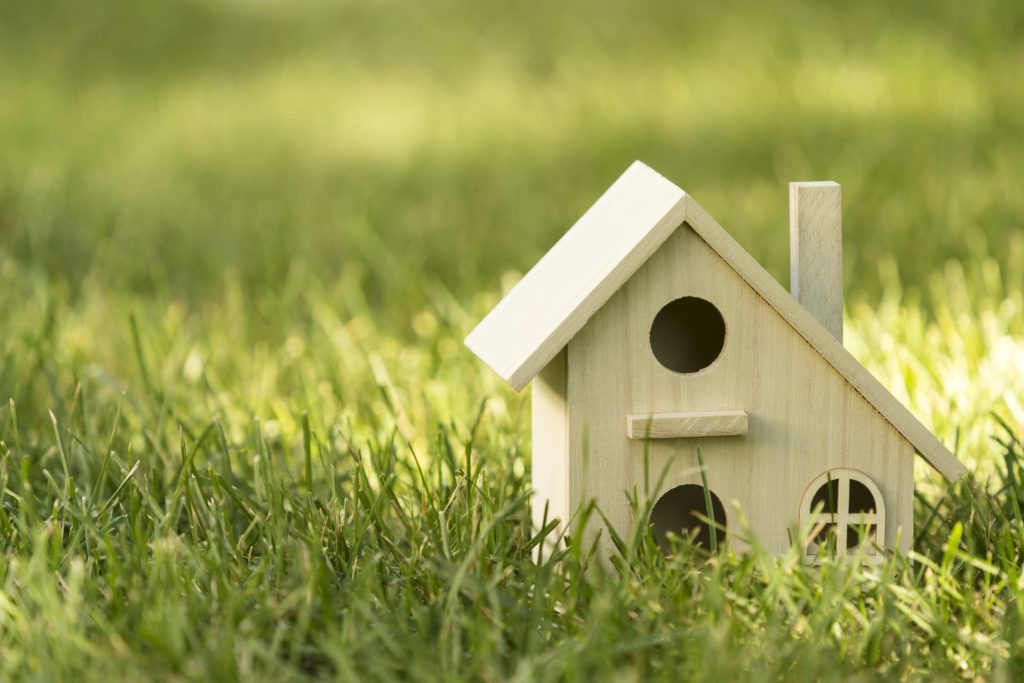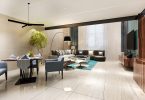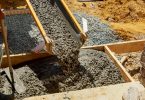The World Health Organization (WHO) Committee report suggested way back in 1984 that up to http://debashishbanerji.com/ 30% of the new and modernized building structures worldwide may be the subject of extreme complaints related to IAQ i.e. indoor air quality. Today, the potential effect of indoor air quality on human health are well documented. On an average, people spend approximately 90% of their time indoors, but what’s petrifying?
It is the concentrations of pollutants indoors which are often 2 to 5 times higher than typical outdoor concentrations. The results? Rapidly hiking numbers of children and young adults suffering from severe allergies and asthma. Presently, allergies, asthma, lung cancer, and heart problems all are being explicitly linked to poor air quality. Let’s face it, victims of ‘ fatly Sick Building Syndrome’ are rising in number every single day and this condition is spreading across faster than we imagined.
Sick Building Syndrome – What Is It?

The term ‘sick building syndrome’, was first coined in the 1970s and is being used to describe conditions in which building inhabitants experience severe health and comfort effects which seem to be associated to the time spent in a building, but no exact illness or cause can be recognized. Such concerns may be restricted to a particular room or zone or can be prevalent throughout the building structure. In contrast, the term “building related illness” (BRI) is used when indications of diagnosable disease are spotted and can be ascribed directly to airborne building contaminants.
Simply put, SBS (Sick Building Syndrome) is an outcome of poor infrastructure which directly attributes bad indoor air quality. When people suffer from Sick Building Syndrome which is caused due to inhaling bad air quality, they may experience severe headaches, feel nauseous or even have difficulty breathing normally. In the long run, the consequences can be even more deadly including diseases like allergies, asthma, lung cancer, and heart problems.
Most often such conditions are temporary, but some building structures can have long-term issues. Normally, problems result when a building is operated or maintained in a manner that is erratic with its original design or prescribed operating procedures. Occasionally indoor air issues are a result of occupant’s activities or poor building design.
Top Indicators Of Sick Building Syndrome
The indicators of SBS include the building occupants’ complaints of symptoms associated with acute discomfort. Here are the top indicators:

- Headache
- Eye, nose, or throat irritation
- Dry cough
- Dry or itchy skin
- Dizziness and nausea
- Difficulty in concentrating
- Fatigue
- Sensitivity to odors
The possible cause or causes of these symptoms are not easily known but most of such complainants frequently report relief soon after leaving the building environment.
Read: “Indoor Air Quality” – Know The Common Indoor Air Toxins & How Green Walls Can Help
Causes of Sick Building Syndrome
According to experts’, symptoms of SBS are possibly the result of a mixture of factors. These factors may include:
- Chemical Contaminants from Indoor Sources
You have to face it; most indoor air pollution comes from sources inside the building. Chemical pollutants from indoor sources include Volatile Organic Compounds (VOCs), formaldehyde (HCHO) from dust, carpeting, adhesives, upholstery, cleaning agents, environmental tobacco smoke, particleboard, paints, varnishes, marker pens, electronic equipment, etc.
Read: Alert!!! Paints And VOCs Can Knock Down Your Indoor Air Quality
- Chemical Contaminants From Outdoor Sources
The outdoor air which enters the building structure is another source of indoor air pollution. Some examples of outdoor air pollutants which could make an entry to a building are pollutants from motor vehicle exhausts, building exhausts (e.g., bathrooms and kitchens), and plumbing vents. These pollutants can easily enter the building through poorly located air intake vents, windows, and other openings.
- Inadequate Ventilation
Inadequate ventilation like defective heating systems, malfunctioning ventilation, and air-conditioning systems.
- Biological Contaminants
Viruses, bacteria, dust mites, pollen, toxic black mold, insect body parts, and bird droppings are types of biological contaminants. These contaminants can breed in stagnant water which has hoarded in ducts, humidifiers and drain pans, or in locations where water has collected on ceiling tiles, carpeting, or insulation.
- Others
Presence of heavy metals such as lead and mercury, ozone produced by printers and photocopiers, and electromagnetic radiation like televisions, computers, and microwaves can add up to the bad quality indoor environment.
That’s not all poor and inappropriate lighting, fluorescent lighting, absence of sunlight, humidity, temperature, noise, bad office design, and poor ergonomics all play a huge role and contribute to an indoor environment.
The Possible Solutions
Solutions to SBS typically include combinations of the following:
- Pollutant Source Removal Or Modification
This is one of the most effective approaches to resolving IAQ issues when the possible sources are known and control is viable. Few examples include:
- Routine maintenance of HVAC systems
- Replacement of water-stained ceiling tile and carpeting
- Institution of smoking restrictions
- Venting contaminant source emissions to the outdoors
- Storage and use of paints, adhesives, solvents, and pesticides in well-ventilated areas
- Permitting time for building materials in new or remodeled areas to off-gas pollutants before the tenancy
Many of these options can be exercised at one time.
- Increasing Ventilation Rates
One of the most cost-effective ways of reducing indoor pollutants levels is by increasing ventilation rates and allowing free air distribution. The HVAC systems should be designed to meet ventilation standards in local building codes. Use local exhaust ventilation when there are robust pollutant sources, these exhausts can flush out the contaminated air directly from the building.
- Air cleaning
Air cleaning can be a very useful aide to source control and ventilation; but again, it has certain limitations. Particle control devices are inexpensive but aren’t effective to capture small particles. On the other hand, high-performance air filters can capture the smaller, respirable particles but are very expensive to install and operate.
- Education and communication
Last but not least, education and communication are one of the most important fundamentals in both remedial and preventive indoor air quality management programs. The building occupants, management, and maintenance people need to understand the causes and consequences of IAQ issues and fully communicate. Proper communication and education ensure things can work effectively together and preventive or corrective measures are taken to solve it.
Studies confirm, that the abnormal growths that pop up on the walls and other building elements can be more than just stains of harmless nature, these can be fungus or bacteria associated with sick building syndrome. Such stains can be extremely dangerous to healthy living and make buildings unsafe for human habitation.
What Can Builders, Architects & Designers Do To Improve IAQ

Homebuyers today are even more concerned about the IAQ of their homes. Problems like mold, radon, carbon monoxide and toxic chemicals have received larger attention than ever as poor IAQ has been linked to a host of health problems. This leaves builders, architect, and designers with a question – What can be done to improve IAQ?
Related: How Can Architects & Designers Address Indoor Air Pollution Issues?
Today builders can employ a variety of construction practices and technologies in their new constructions to address these concerns. Some of them include:
- Moisture Control – Moisture is one of the most significant reasons for the formation of mold and other biological pollutants. Builders can use a variety of moisture control features designed to minimize these risks. These features include improved control of condensation and better roof, wall and foundation drainage.
- Radon Control – In the United States, radon is the second leading cause of Lung Cancer. Radon is a naturally occurring radioactive, invisible, and odorless gas which can be life-threatening hence in areas where radon potential is high builders should employ radon-resistant construction techniques.
- Pest Management – Residue from pest can trigger allergy and asthma attacks. Builders should seal, caulk, or screen areas where the pest can enter a home.
- Heating, Ventilating, and Air-Conditioning (HVAC) – When HVAC systems are poorly designed it can lead to comfort issues and diminish the indoor air quality. Builders should pay close attention to the design of these systems; employing properly engineered systems, improved duct and equipment installation, improved filtration, and whole-house and spot ventilation to dilute and remove indoor air pollutants are extremely important.
- Combustion Venting – Using properly vented heating equipment, installing carbon monoxide alarms in all sleeping areas, and taking steps to stop garage pollutants from entering a building ensures combustion gases do not accumulate inside the building.
- Building Materials – The types of materials that builders choose and the way they manage them during construction can significantly improve a home’s indoor air quality.
It’s a crude truth, but we are now sharing our living and working environments with some bacteria and molds in spaces created by design, construction methods, wrong use of materials, poor usage by occupants, or a combination of all of these. Safety in buildings should not be taken for granted, instead, it needs a broader outlook. It’s not just about providing a roof, but a healthy living environment.
When homes are constructed responsibly, they are bound to provide unparalleled energy efficiency, comfort, durability, indoor air quality, and peace of mind to its inhabitants.
Curated by a building expert from Wienerberger India









